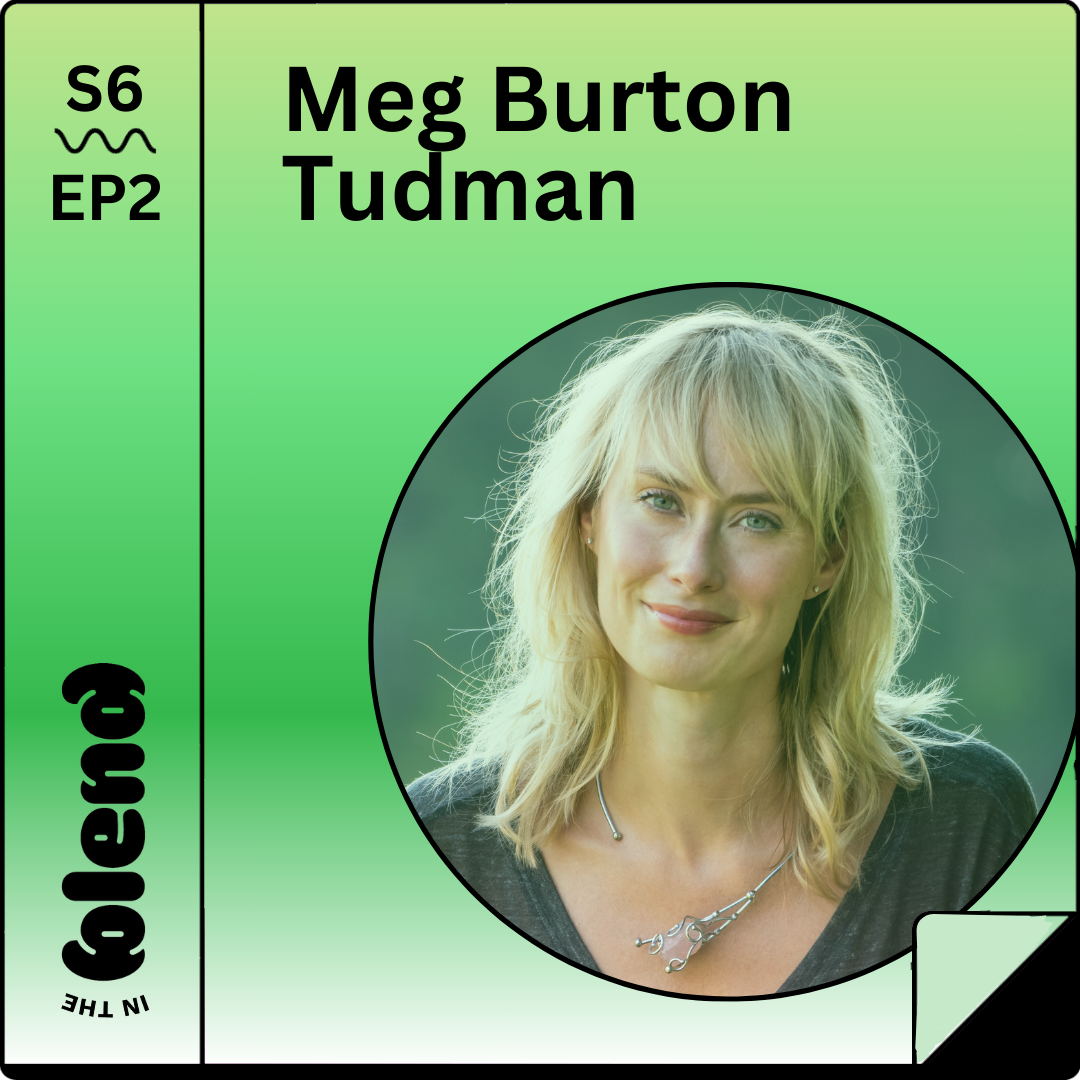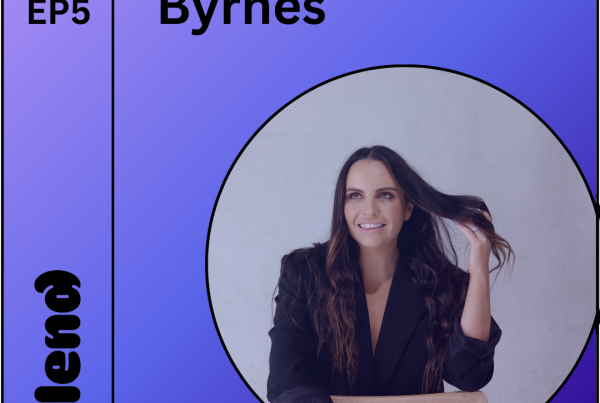
In this conversation, Meg Burton Tudman, a holistic health coach, shares insights gleaned from her work in helping women, particularly stepmums, thrive. We discuss topics such as burnout, mindset shifts, setting boundaries, managing stress, self-care, building resilience, and the importance of community support.
Meg has plenty of practical experience and offers tips that can be easily applied to everyday life.
@MindsetMasteryWithMeg
Meg Burton Tudman: You before you even set any boundaries to get clear on what is important for you. Where do your values lie? That clarity can help you determine, okay, this matters and needs a boundary or this really doesn’t matter to me and I can let this one go.
Laura Jenkins: In the Blend is a podcast series that helps parents navigate life within a blended family. Join me as I speak with experts and guests to get practical advice on how to have a harmonious blended family life. This series dives deep into the unique dynamics, logistics and challenges of raising a blended family. From new partners to juggling mixed finances. We will help guide you through it.
Welcome back to In the Blend. I’m your host, Laura Jenkins, and today’s episode is a journey into the world of mindful stepmother-hood. We’ve got a fantastic guest on board, Meg Burton Tudman, who is on a mission to help stepmoms overcome burnout, make powerful mindset shifts, and incorporate holistic wellness into their daily lives.
In today’s chat, Meg provides a roadmap to not only navigate the challenges like burnout and stress, but help you embrace them with resilience. And what I loved about our chat is that her tips are very practical and they can very easily be incorporated into your daily life. Before we dive into today’s chat, I have a quick request. If you’ve been enjoying the content on in the blend, please take a moment to subscribe to the podcast and if you’re feeling extra generous, consider leaving a rating and review. This ensures that we can continue to provide you with meaningful content and can reach even more people like you. Thank you so much for your support. All right, now let’s get started with the show.
Well, welcome, Meg. It is such a pleasure to have you here. Meg, to start us off, can you share a little bit about your background as a holistic health coach and how you became passionate about helping women and in particular, stepmoms thrive?
Meg Burton Tudman: Absolutely. Hi Laura. It’s such a pleasure to be here. I’m so excited for our conversation. We chatted a little bit offline before we hit record, and you and I are similar in that our backgrounds are in marketing and I left that world because I felt like something was missing from my professional life and really wanted to create an opportunity where I felt like I was having a really positive impact and making a difference and had a friend who was coaching. I at the time didn’t even know that that was a thing. And she said, you know, meg, if you go through this training programme, you’re really going to have to dive into all of your own stuff, know, start to heal and process everything that’s happened for you. And as soon as she said that, I was like, where do I sign up? I’m in. That sounds so fantastic. And so I dove into the work and I love approaching coaching from a holistic standpoint, as you mentioned, because I think in particular, mindset and energy work is so powerful and are things that we can tap into throughout every day. So there are skills that we can learn, there are practises that we can cultivate and they seem to have a lot of bang for their buck, so to speak, so that we really can start to take control of how we relate and respond to the world around us. And I’ve always had a really special place in my heart for women and have always been a champion of women and the opportunity to partner with them and support them in this way is such a gift to me. So that’s been really nice.
Oh, fabulous. It sounds like we’ve got a lot in common, you and I, Meg, similar background and yeah, I’ve also been led to this podcast through a similar urge around helping people and sharing some of the insights that have been really helpful that I’ve uncovered along the way.
So Meg, you’re not a stepmom yourself, but you mentioned you’ve worked with stepmoms as part of your career and I know you’ve also been an author in Stepmom magazine, which is published out of the US as well. Really interesting to see that you’ve specialised in the space.
Meg Burton Tudman: Yeah, I’m so grateful to be part of that community. It is such a supportive and positive and just like rooted in professional advice. I think there’s a lot out there that is maybe just experiential, which for sure can be helpful. But I love the diversity of the authors for Stepmom magazine and I think that creates a really unique platform to provide support for the stepmom community. So it’s a joy to be part of that community.
And as I was saying to you again before we hit record, I really quickly realised that this group of women who sometimes find themselves almost like accidentally, right, it’s often not something that you plan for in this situation and they have so much to offer and they have such a gift to give and often there are so many hurdles to them being able to show up authentically and fully and actually give those gifts that this is like the perfect place for mindset and energy to come together so that again they can take their power back and they can really create a reality that helps them to thrive, because we all deserve that. And this group in particular, I think, is really worthy of that.
Laura Jenkins: I love it. Well, we haven’t focused an episode on mindfulness or any strategies like this to date, so very interested in hearing some of your tips and tricks.
Meg Burton Tudman: Sure.
Laura Jenkins: Let’s start with burnout. And I know this is something that I have experienced. I’ve likely more experienced overwhelm than burnout, I think. But what are some of the signs of burnout? And how can stepmoms differentiate burnout from everyday stress?
Meg Burton Tudman: Oh, I love that question. I think that’s really important. And it may be a combination of both. Right. And I love that you mentioned overwhelm, too, because I think burnout, stress, and overwhelm often tend to show up together. Right. We experience them. It’s like kind of a trifecta in not such a good way. I think for burnout in particular, some things to be mindful or to be aware of would be a feeling of complete exhaustion. So not just once in a while, but, like, ongoing to your core, you feel completely exhausted. Also feeling a lot of cynicism that maybe isn’t you at your core. So finding that you’re tending towards outbursts or feeling cynical about things. And again, that’s not you. And that’s going to be a different spectrum for each of us. Right. So your burnout might look completely different than somebody else’s burnout, and that’s okay. It’s okay if the degree to which you experience these things is different.
I think also some things to be mindful of, certainly feelings of depression, feelings of detachment, feeling like a sense of hopelessness or that you just can’t get through this, can’t get motivated to continue on in this way. And also, from a physical standpoint, things like headaches and stomach aches. And again, that’s something that, unfortunately, we all are probably going to experience. And how does that compare to what maybe your baseline is, what your quote, unquote normal used to be? And is there a vast difference? And again, there’s going to be a spectrum here. So how it looks for one of us may be vastly different than how it looks for another one of us. And so I always say that, you know, your body, your mind, your heart, the best. And so take that power and give yourself that grace and that ability to say, this isn’t right. This isn’t me right at my core. This isn’t me.And so recognising when things seem to be lasting for, again, a significant duration or the intensity of them is really significant, being mindful of that, I know.
Laura Jenkins: In my own personal experience I haven’t had any of those physical symptoms that you’ve described. But what has surfaced for me quite often is that feeling of being the hamster on the wheel.
Meg Burton Tudman: Oh, yes.
Laura Jenkins: You feel it’s just another day more of the same. And there might be ex wife issues, there might be step kids and children to navigate, there’s a busy corporate job to navigate and you’re just going through the motions, trying to get through all the things that need to take place.
Meg Burton Tudman: Yeah, it’s like you’re not really living right, I think that way to describe it, you’re just going through the motions, you’re not living your life, you’re just showing up, doing what needs to be done but not getting any joy out of it. And that’s a little bit separate from burnout, but for sure that’s an indication that something isn’t right and isn’t certainly as we would like it to be.
Laura Jenkins: Yeah, definitely. So how do you then approach mindset shifts in your coaching practise that might help stepmoms who are in that place of burnout, as you’ve described, move into a place of thriving?
Meg Burton Tudman: I would love that for everybody listening from my heart to yours. And it’s possible, for sure. It’s not always easy, but I do think there is a simplicity to it. So first is actually acknowledging how you’re feeling, what’s happening for you. Is it burnout? Are you on the hamster wheel? Are you overwhelmed? Are you stressed? Are you something completely different? So, starting to notice how do you feel and what’s contributing to those feelings and then looking at that situation and trying to assess where your power lies to be sure, we’re not going to be able to control an ex wife or anybody in this situation, right.
We don’t have that authority, that ability, but we can control how we relate and how we respond. And that’s so simply said. And yet I think it’s one of the most challenging things for us to do, especially in situations that are so complex and so nuanced, in situations where you may be dealing with other people who are really difficult, to put it kindly, right, who just are not on the same page and who are not willing to work together. And so trying to, again, give thought to where does my power lie? How can I respond to this in a way that is helpful for me. So looking at it through the lens of my knee jerk reaction might be to get angry and yell back if someone is yelling at me and thinking about, well, is that really me? Is me being angry at my core, who I am?
Is there another way I can respond to this? What are the boundaries that I can honour, which is especially for women, I think can be such a difficult thing for us to figure out what even are our boundaries, right? And then how do we honour them?
But looking at what can I do here that’s going to align with what matters to me? So getting clear on what are my values, what are my priorities and how can I then actually take action and create beliefs and engage with the thoughts that are right in line with what my priorities and my values are? And that’s something you can do with your partner for sure, so that you two are on the same team and can be a more united front. But also there is an element of personalisation to that. So being sure that you’re honouring again what really matters to you and is important to you.
Laura Jenkins: Boundaries is an interesting one, and we’ve had a whole episode on the theme of boundaries in the past, but I feel like we’ve only scratched the surface as well because it’s such a big, important topic for stepmoms.
Meg Burton Tudman: It is so big and can be again, so difficult. What I found most helpful, especially from a mindset standpoint, is, again, to get clear before you even set any boundaries, to get clear on what is important for you, what matters to you, where do your values lie? Because then that clarity can help you determine, okay, this matters and needs a boundary, or this really doesn’t matter to me and I can let this one go, or my boundary for this is going to be non negotiable. Or my boundary for this could involve a compromise with the other person or the other people. So that clarity up front, from a value standpoint, I find so helpful and helps us to determine what’s worth my time and my energy. Because it isn’t all worth our time and our energy. I think it’s easy to get caught up and feel like it all needs our time and our attention and our energy. If we can take a step back and get clear again on what matters to us, then we’ve got a little bit more power to say, I can let that go, which is a really hard thing to do. I will be the first one to say when somebody says, oh, just let it go. My shoulders creep up and I get a little miffed right from the beginning, but I think, again, that clarity can be really helpful there.
Laura Jenkins: Yeah, I think that’s great advice. Just getting that crystal clear focus on what is truly important to you and then what you’re saying is that makes it super easy then to determine what should your boundaries be and where do they matter?
Meg Burton Tudman: Exactly.
Laura Jenkins: So let’s talk a little bit about stress, because I know stress is not the same as burnout, which we’ve talked about, but also a very common challenge for stepmoms. And this can tie in a little bit to that hamster on the wheel feeling. But I know in my personal experience, I can tend to feel stressed if there’s an event coming up where there might be a little bit of tension because it’s, say, a family occasion and I know that the ex partner is going to be there and there’s just been a blow up about something a few days ago. So I feel like it might be a little bit icy or I feel stressed.
If we get a message to say that the school hat has been left out of the belongings which were handed over on changeover day, and we need to drop everything and race it over so that it’s there in time for school the next day, those sorts of things can be triggers for me.
What stress management techniques or practises do you recommend for helping to maintain a positive mindset when these things crop up as they naturally do, that can cause.
Meg Burton Tudman: Naturally do, and it can feel as if the world and everyone in it is totally against you.
Right. It just feels like everything is coming at you. And again, to the hamster wheel analogy, it’s like, oh, my goodness, this is happening again. I think one of the most simple, and you can do it anywhere and it still kind of blows my mind that it works as well as it does is breath work. So taking a deep, cleansing breath.
Can keep it really simple and just take the biggest inhale through your nose that you can, and then sigh out your mouth after. That will shift things for sure. From an emotional standpoint, a mental standpoint and a physical standpoint, you can get a little fancier with that and do a more formal breath work practise. And there are some great meditation apps and resources out there that can guide you through breath work. That’s something that I work really closely with my clients on.
So there are things like the box breathing.So imagining a box or a square, and as you inhale, follow the side of the square from bottom to top, then hold your breath, follow the square across the top, exhale, follow the square from top to bottom and then hold the breath again. Follow from the bottom of that line over to where you began. So you’re kind of drawing a square in your mind and letting the breath, the pause, the breath, the pause, follow that and you can count that. So it might be like an inhale for three or four, a hold for the same amount, an exhale for the same amount and a hold for the same amount.
Those opportunities to reconnect with yourself, to ground yourself, to let yourself pause, essentially, is what’s happening can be so helpful, so that those common kind of knee jerk reactions aren’t there and we’re actually able to respond instead of react, which is so empowering, because then we’re actually making a choice. Okay, what is it that needs to be done? I’ve got to drop something off at school or I have to be in an event that might be a little bit icy. And so getting yourself in a calm state before you take that next step can be really helpful. So again, simple deep breath, or something more formal like a box breathing or square breathing can be really helpful for that. And I would encourage everybody listening to try it because for me, at least in the beginning, I thought, I’m breathing all day long.There’s no way that this is going to be helpful. There’s no way that this is going to make a difference.And so I really needed to experience it first before I bought into it. So if you’re like me and are kind of feeling some resistance to that, give it a go and see how that works for you.
But I think breath work is a big one. Self care in general, I think, is so important for everything that we’re talking about today. And I look at self care as not necessarily a bubble bath or like a glass of wine and a piece of chocolate, but instead as a series of choices and decisions that you’re making all day long that honour your highest, your best self, or that honour the alignment of your mind, your body and your soul. So looking at things like, how are you talking to yourself? And what are you saying about yourself? We hear the narrative in our mind more than we hear anybody else’s voice. So is that a voice that is kind and compassionate and supportive, or is that a voice that is tearing you down and criticising you and judging you and starting to become aware of how that impacts things?
Also looking at, again, boundaries. That’s a form of self care. Honouring boundaries as a form of self care. Or going a little bit deeper than maybe those traditional physical practises and seeing if that is helpful, too, from a stress standpoint.
Laura Jenkins: Yeah. So you don’t necessarily need to be booking in for that weekly massage or Manny petty or spending money. There are things that you can be doing just day to day. I think, for me, exercise really is a form of self care that’s related to that stress management, isn’t it?
Meg Burton Tudman: Absolutely.
Laura Jenkins: Again, something that can cause stress is if I look in my calendar and think, oh, no, when am I going to fit in time to move my body today? And something that’s worked for me in particular, since working from home is not taking all of my calls during the day on Zoom. And if it’s, say, a one on one with my team member, I’ll go for a walk around the block and I’ll take that call on the phone instead. And just getting creative about where you can find those moments for incidental movement. And even that short walk around the block during a 30 minutes call can make you feel so much better.
Meg Burton Tudman: I think that’s brilliant. And I think that our busy lives, and especially the busy lives of stepmoms, where there’s so much expected of you. Right. And it’s such a unique situation that it requires us to get a little bit creative, and it requires us maybe to do things differently than we did them in the past. And I also would encourage everybody listening to not discount those shorter durations. So a breath. Right. Or a walk around the block can be so helpful. So if you don’t have big expanses of time that you can block off in your day for things like self care, whether it’s exercise or something else, looking at it instead. Okay, could I do, like, five or 15 minutes increments? And how does that support me throughout the day? Does that work for me?
Laura Jenkins: Yeah, that’s it. Something’s better than nothing, isn’t it?
Meg Burton Tudman: Yes. Absolutely.
Laura Jenkins: Now, let’s talk about resilience. Because in my experience, resilience is something that you really need to build as a stepparent, and it can be crucial in helping you navigate some of the complexities that arise. So in your view, how can stepmoms build and strengthen their resilience, both mentally and also physically, too?
Meg Burton Tudman: And physically, too, right. Yeah. I love that this came right after our conversation about self care, because I think those two go hand in hand. I think the more that you can care for yourself, and again, it’s not the massage or the mani pedi.
Those are great, and they’re helpful in different ways. But really digging into how can I support and care for myself? That’s going to help build resilience, because then you’re not.
I’m not crazy about this expression, but it does work. You’re not pouring from an empty cup, right? Like, what can you do to care for yourself? So that when you are tasked with or responsible for caring for others, you actually have something to give and you can give and receive in a way that is beneficial for everybody. You and the kids and your partner and everybody else involved.
I also think, from a resilience standpoint, is learning from the past, and that goes back to that hamster wheel. So if you feel like you’re on that wheel, please know that you’re not alone. That happens so often. And if you can recognise that, please celebrate that, because that’s huge. Being able to recognise this keeps happening for me, or, like, this situation keeps coming up, or I keep having this feeling on repeat. That is so helpful to then make a different choice. All right, so the ex partner, the kid’s mom, is behaving in a way that is super triggering and she does it all the time. It feels like it’s on repeat. So she likely isn’t going to change. She might, but it’s out of our control. Right. So if that keeps happening on repeat, what can you learn from that? What are your other options? What are the other opportunities? How else could you relate and respond to her behaviour? And is there a way for you to respond that is better for you and for everybody else involved? I think that’s the idea, is to continue to learn and to continue to try to set yourself up in a way through action, through thought, through belief that is aligned and is helpful for you, so that you can thrive. And looking at the past, not through the lens of judgement and criticism, which can be so easy for us to do, right?
It’s so easy to sit there and say, oh, I should have done it this way, or, I wish I had done it that way, or I should have known better, or differently, or whatever the case may be.
But instead, to frame that as I did my best, I’m showing up as my best every moment of every day, and my best one day is going to be vastly different than my best another day, just based on everything, right? Internal and external circumstances.
And so looking at, I did my best and here’s what I learned and here’s how I can start to build that resilience so that I’m prepared for what happens. And looking at how you frame things and how you choose to react, especially to those things that are on repeat, where we can’t predict the future. And that’s a slippery slope to say, well, she always does this or it’s always like that.
But if you’re finding that giving yourself an opportunity to choose a different path in response to that.
Laura Jenkins: Yeah, I like that idea of. I think you said it earlier, respond, not react.
Meg Burton Tudman: Yeah.
Laura Jenkins: And I think that really nicely ties into this idea of resilience, doesn’t it? And being able to catch yourself in the moment, think about what’s going on and why, and respond appropriately. And the other thing that was coming through for me when you were speaking just now was this idea of just giving yourself some grace as well, not being too hard on yourself. And through the act of doing that, you can help to naturally build that resilience through being kinder on yourself.
Meg Burton Tudman: Absolutely. I completely agree. I think that connection too is really important for resilience. I think creating those communities, whether it is something like the step mom magazine community or something like a podcast community or a local community, it can be anything, right? And the people in that group can be anything. But really starting to prioritise relationships so that you have that external support as well. Right. You have those people who can reflect back to you your brilliant light and everything that you have to offer so that in those moments on those days where you’ve forgotten that which that will happen. Right. You’ve got people who can reflect that back and who can be supportive for you.
Laura Jenkins: Yeah, that’s such a good point. The community aspect and finding, especially for stepmoms, finding other people who get it, who’ve either worked in the space or they’ve had that personal experience as well.
Meg Burton Tudman: Right. Because it really is unique. It’s a very unique experience. While it is an individual path that you’re on, you don’t have to do it alone. So keep that in mind that there are so many people out there, and I think that for a while, and this was decades and decades ago, but it was such a taboo subject and I’m seeing a shift away from that, where people are more open about it and there are more easily accessible resources for that support and that community. Definitely. You’re not.
Laura Jenkins: No, no. Now, Meg, where can people go if they would like to get in touch with you or learn more about any of the services that you offer in your practise?
Meg Burton Tudman: Thank you so much. I would love to connect further. Absolutely. The best place is my website, although it’s currently under construction.
I’ll fast track that. But that’s my name. It’s megburtontudman.com. I’m also on social media. You can find me on Instagram at Mastery with Meg or on LinkedIn again with my name, Meg Burton Tudman.
Laura Jenkins: Fantastic. And we will definitely link to all of that in the show notes.
Meg Burton Tudman: Great. Thank you.
Laura Jenkins: Well, Meg, it’s been such a pleasure speaking with you today. I have learnt many tips and tricks that I’m going to be putting into practise. In particular, the breath work.That’s something I haven’t done before.
Meg Burton Tudman: Good. Oh, keep me posted.
Laura Jenkins: Yeah. Next time I feel that blood pressure rising, I’m going to be thinking about that square in my mind. So helpful. I love it.
Well, thank you again. Really appreciate your time.
Meg Burton Tudman: It was such a pleasure. Thank you.
Laura Jenkins: Thanks for listening to the in the Blend podcast. The show notes for this episode are available at in theblend.com au and if you like what you heard, be sure to subscribe and please rate and review in your podcasting app. You can also follow me on Facebook, Instagram and LinkedIn.





